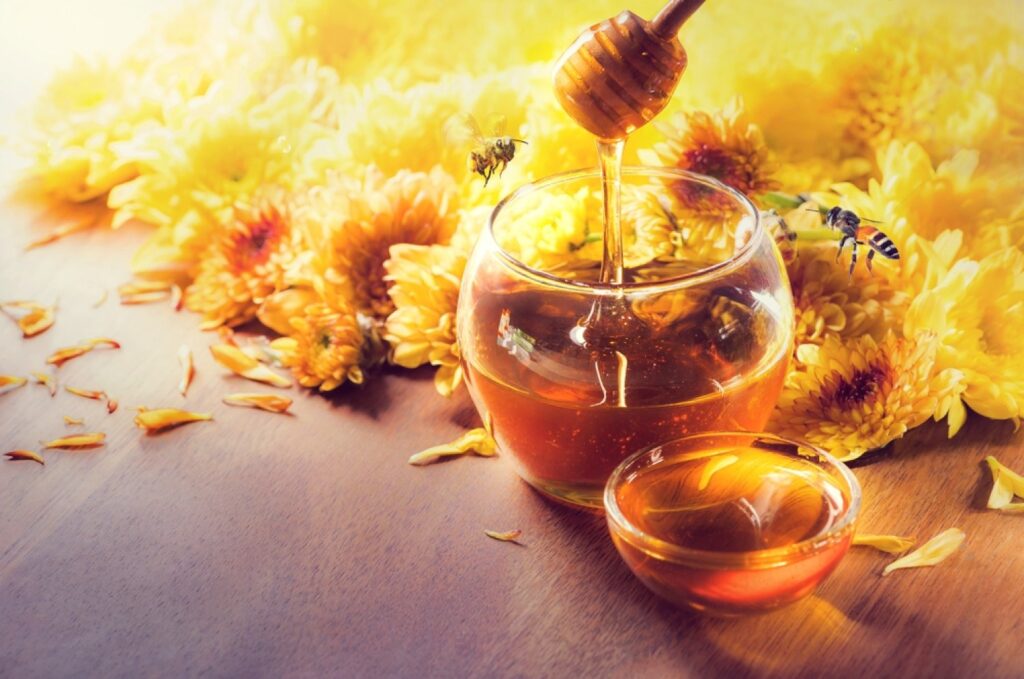
For centuries, honey has captivated humankind with its golden hue, exquisite taste, and myriad of health benefits. Considered nature’s sweet gift, honey is not just a delightful addition to our culinary creations but also a remarkable substance with a rich history and numerous therapeutic properties. In this blog, we will delve into the enchanting world of natural honey, exploring its origins, production process, diverse varieties, health benefits, and its role in traditional and modern applications.
Origins and Production:
Honey has a long and storied history, dating back thousands of years. It is produced by honey bees from the nectar of flowering plants. Bees collect the nectar and transform it into honey through a process of regurgitation and evaporation. They deposit the nectar into honeycombs, where enzymes break down complex sugars into simpler forms. The bees then fan their wings to reduce moisture content, resulting in the thick, sweet liquid we know as honey.
Varieties and Flavor Profiles:
One of the remarkable aspects of natural honey is its incredible diversity in terms of flavor and color. The flavor profile of honey can vary depending on the types of flowers visited by bees. Different floral sources, such as lavender, clover, orange blossom, or eucalyptus, impart distinct characteristics and aromas to the honey. From delicate and floral to robust and earthy, there is a honey variety to suit every palate.
Health Benefits:
Natural honey offers an array of health benefits, making it a prized ingredient in traditional medicine practices and modern wellness regimes. Honey is known for its antimicrobial properties, aiding in wound healing and combating infections. It also contains antioxidants that help protect the body against cellular damage. Additionally, honey has been used to soothe coughs, sore throats, and improve digestion. However, it is essential to note that infants under the age of one should not consume honey due to the risk of botulism.
Culinary Delights:
Honey’s delectable taste and versatility have earned it a prominent place in kitchens worldwide. It serves as a natural sweetener and flavor enhancer, elevating everything from teas and desserts to glazes and marinades. Honey is a popular ingredient in baking, adding moisture and complexity to cakes, cookies, and bread. Its natural syrupy texture makes it a delightful drizzle over pancakes, yogurt, or fresh fruits. The possibilities are endless when it comes to incorporating honey into culinary creations.
Sustainable Beekeeping:
The importance of sustainable beekeeping practices cannot be overstated. Bees play a crucial role in pollination, contributing to the growth of fruits, vegetables, and flowering plants. However, honey bees face numerous challenges, including habitat loss, pesticide exposure, and climate change. Supporting local beekeepers who practice sustainable and ethical beekeeping can help preserve honey bee populations and ensure the availability of natural honey for generations to come.
Authenticity and Quality:
When it comes to purchasing honey, it is important to prioritize authenticity and quality. Natural honey should be free from additives, such as artificial sweeteners or preservatives. Look for raw or unprocessed honey that retains its natural enzymes, pollen, and nutritional properties. Local honey from trusted sources often reflects the unique floral diversity of the region and can provide a delightful taste experience.
Conclusion:
Natural honey, with its rich history, diverse flavors, and health benefits, continues to captivate our senses and nourish our bodies. From the tireless work of honey bees to the artistry of beekeepers, the journey from flower to hive to our tables is truly remarkable. Whether enjoyed in a soothing cup of tea, as a sweet drizzle on toast, or as a wholesome ingredient in our favorite recipes, let us appreciate and savor the golden nectar that nature has gifted us in the form of natural honey.

